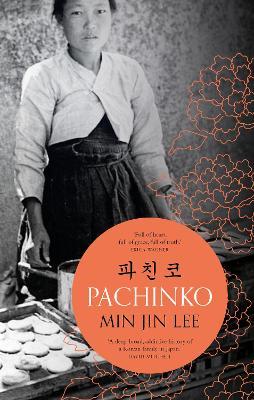 Pachinko is a Japanese arcade/gambling game, and pachinko parlours sound a lot like poker machine venues; huge busineses with the games essentially rigged against the gambler. A few winners, but mostly losers. A bit like life?
Pachinko is a Japanese arcade/gambling game, and pachinko parlours sound a lot like poker machine venues; huge busineses with the games essentially rigged against the gambler. A few winners, but mostly losers. A bit like life?
Min Jin Lee’s Pachinko is an epic family saga, spanning four generations of a Korean family in Japan. My 26-year-old son recommended it to me a couple of years ago, and I’ve only just got around to reading it, but I devoured it in a couple of days. Actually, in the final third, I deliberately tried to slow my pace. I didn’t want it to end. When I spoke to my son yesterday, I thanked him for telling me about it. We agreed that not only is the book about a time and a place and a people we know little about, it’s immersive and human and so moving.
Even more moving, my son thought, because there is no sense of manipulation, of heart-strings being pulled by the writer. The style is plain and often understated. At times the result is devastatingly sad; sometimes unexpectedly dramatic.
The saga begins in 1911. The Japanese have just annexed Korea. In a small fishing village, a marriage is arranged between 15-year-old Yangjin and the older, disabled Yoonie. The match is unexpectedly successful; the couple love each other and their surviving child, a daughter, Sunja. When Hoonie dies, Yangjin and Sunja continue to run the family boarding house. Under the Japanese regime, times are hard.
Then Sunja falls for a captivating stranger, Hansu, and becomes pregnant. But he can’t marry her, because he is already married. He is also a yakuza. It’s a disaster.
A Christian minister, Isak, who has been nursed back to health by the family, offers to marry her. He will take her to Japan with him. It’s 1933; they will start a new life there, with his brother and sister-in-law, in Osaka.
In the decades that follow, the extended family struggles with poverty, illness, imprisonment, death. There are happy family times as well, though hard work is unrelenting. The deep friendship between Sunja and her sister-in-law sustains them both. Sunja’s builds a business selling kimchi and sweets, so the family manages and even prospers. She makes sure her two sons are educated, but university for her oldest, Noa, seems out of reach – until Hansu, who has been watching over the family, steps in.
The story of the younger generation continues into the late 1980s.
The changes wrought by history – the war, the bomb – destruction and chaos and poverty – followed by the reconstruction and prosperity – form the background to the character’s lives, but it’s by no means a history lesson. However, the prejudice and social and legal barriers that affected the daily lives and aspirations of Japanese Koreans pervade the story and provoke some of the most tragic episodes. Koreans seem to have been regarded as an underclass, possibly criminal, certainly inferior to the Japanese even though so many were born in Japan and were often indistinguishable from Japanese people – except for their ‘alien’ identity papers, which they had to renew regularly.
And pachinko? It was one of the few lucrative industries where Koreans could succeed – several of the characters find employment and good fortune. And, of course, it’s a metaphor for the game of life.
I could talk about resilience and endurance but there was no hokey uplifting finale. I think survival is the best word to use.
And love.

This has also been on my radar for a while — you’ve prompted me to check it out from the library, thank you. Looking forward to it!